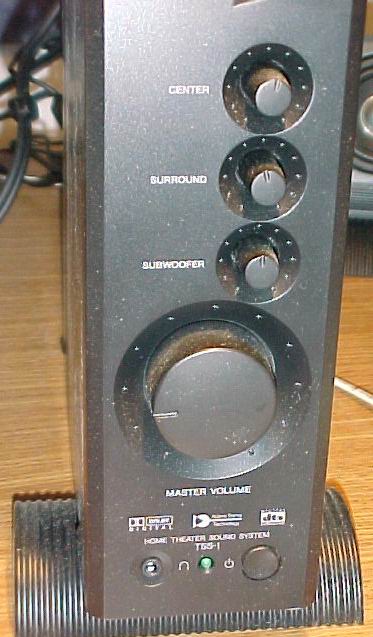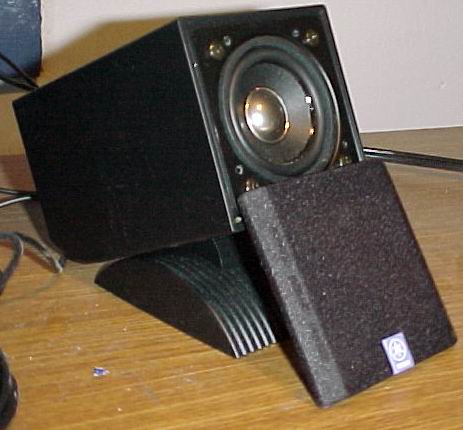Yamaha TSS-1 Dolby Digital / DTS 5.1 Surround Speakers
by Jim Warren on May 7, 2001 1:44 AM EST- Posted in
- Smartphones
- Mobile
The Sound
The amplifier unit for the system is the first step when checking for the sound of the system. On the front of the unit is a test button that runs a pink noise sequence to check the five satellites for correct wiring and operation, but can also be used to set each speaker to equal volume levels to compensate for different distances to the listener.
The best thing to listen to a system with first is a favorite audio track or DVD scene. A little bit of an open mind is required to tune the system, checking both software and hardware settings that could be adjusted to make the system sound right. The initial objective is to balance the system between sounding good, and sounding correct. Though these may appear to be the same, it is important that the sound system be pleasurable to listen to (the good part), while also not altering the character of the original track (accuracy).
For this purpose, there are level controls for the center channel, the surround volume, and the subwoofer built into the amplifier system. Unfortunately, there are no tone controls on the TSS-1, but keep in mind that your soundcard may offer some software controls in its audio control panel. Do a little exploring, as they may be hidden under an advanced options panel that requires a little digging. Oftentimes, the equalization ends up only being able to adjust the levels of the highs and lows, though some cards offer a little more control.

The first test of the system indicated that it was going to require some tweaking. Out of the box, the highs were extremely emphasized and the bass got carried away. Adjustments to the highs in software brought things a little more under control, though there is a strong high frequency presence in the system.
Many computer speakers systems are plagued by a frequency response characterized by excessive highs and mismatched low mid frequencies. This arises from the sub/satellite design when designers try to use the sub for more than what it should.
The small drivers utilized in satellites speakers do no have the mass or the size to move the necessary air volume to recreate lower midrange and upper bass frequencies. As a result, the satellites can't get down to the lower musical frequencies and especially low vocals. Many computer speaker systems are designed with a high crossover frequency in an attempt to compensate for this situation by sending the low mid frequencies to the subwoofer.

Unfortunately, this “solution” creates a two-fold problem. The first difficulty is that large drivers designed to produce actual “sub” ranges are designed to move lots of air in order to impart the necessary energy. This design is not optimized for lower mid frequencies, which also require more accuracy. Subwoofer systems are also designed on the concept of the lack of directionality for bass frequencies. However, this only applies to frequencies below 100 Hz, far below the crossover points of most of these systems. The result is that half of the program seems to come from the sub while half of it originates in the satellite. Combine this with the roll off in the lower mids, and the systems are characterized by displaced and overemphasized highs and lows.










2 Comments
View All Comments
snowmyr - Friday, September 13, 2019 - link
Great review!fluidaudio23 - Friday, January 31, 2020 - link
Get the highly effective <a herf="https://www.fluidaudio.com/products/desktop-stands...">Desktop stands</a> from Fluid Audio designed for use with all 7” and 8” 2-way studio monitors. It comes with rubber feet that convert it into an acoustic isolation system and offers you the facility to elevate your monitors to two heights: 2.5” and 5”.